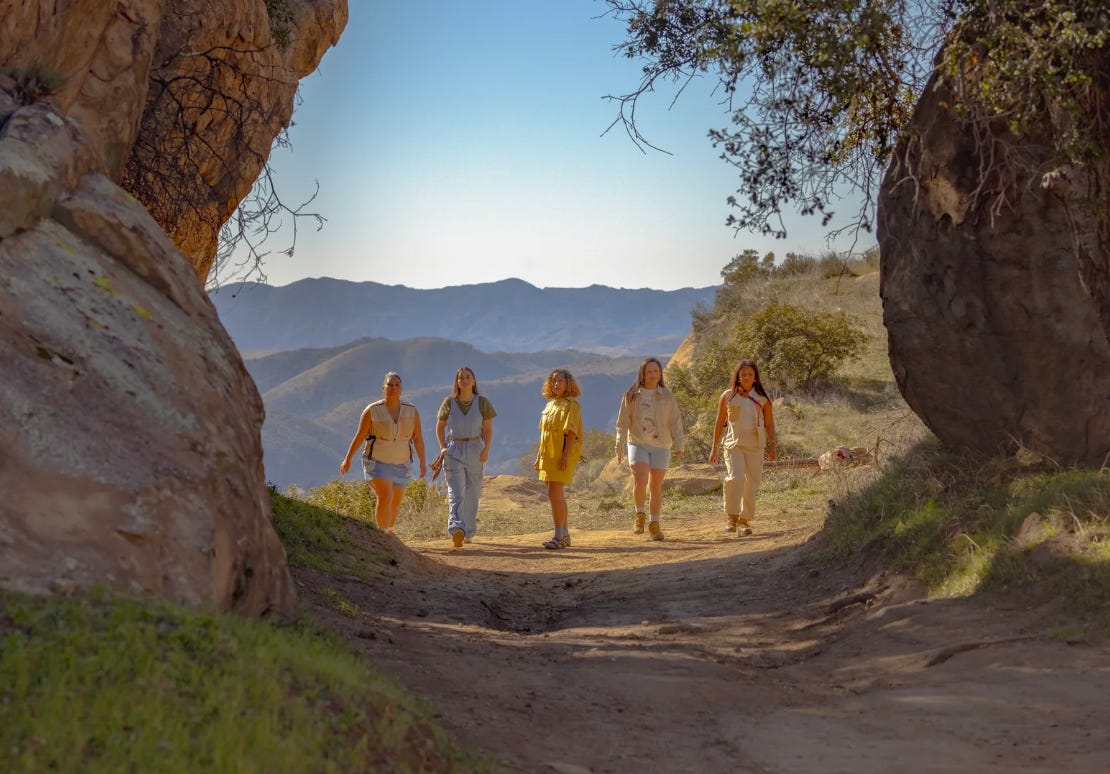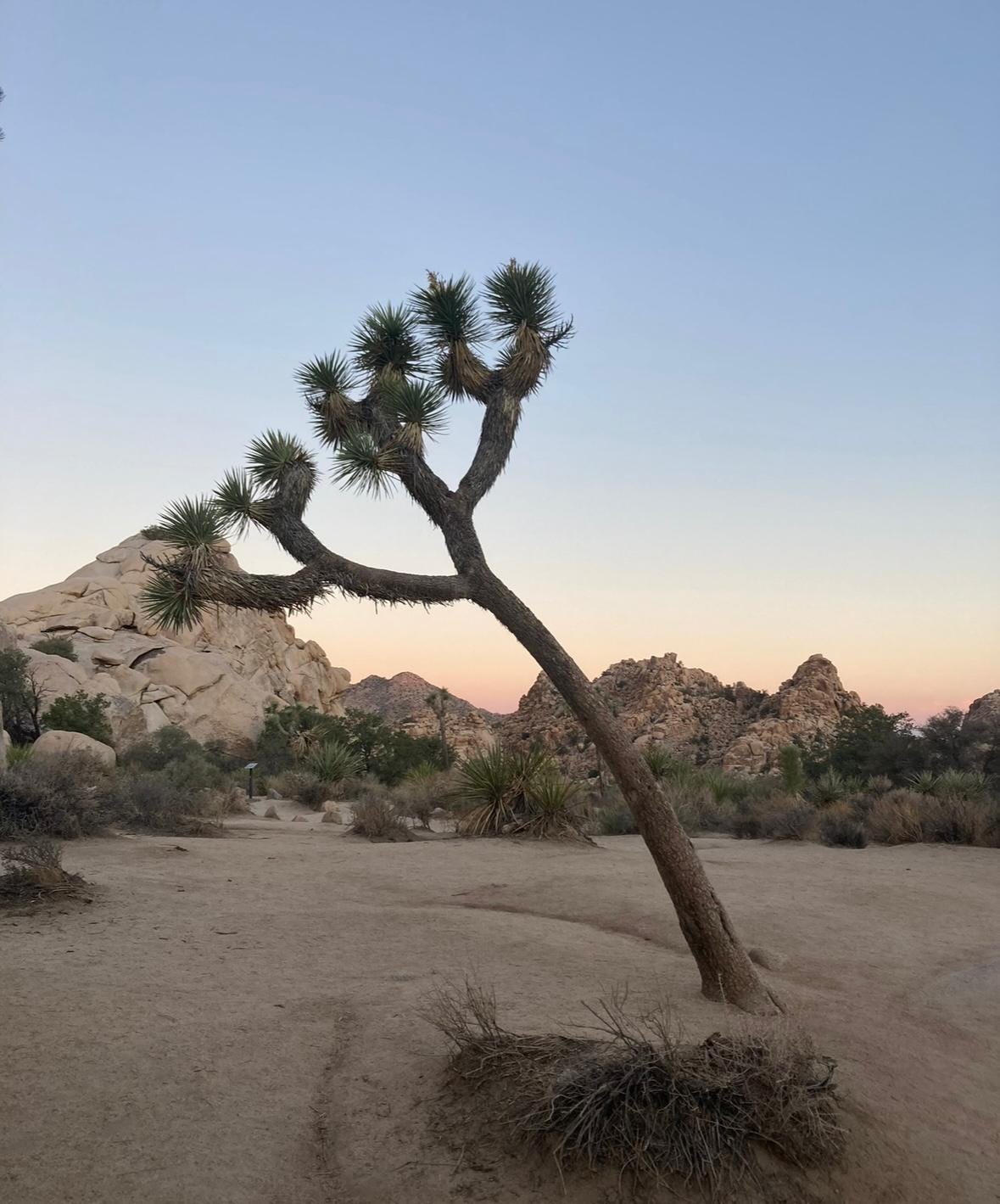walk, don’t run: the new luxury of slowing down
why walking groups are on the rise + how brands can tap in
walking is no longer just a way to get from A to B - it’s becoming a cultural experience. Once, fitness was defined by high-intensity performance - think boutique HIIT classes, Hyrox, SoulCycle, Barry’s, and 75 Hard. Now, the shift is toward slowing down with intention. Walking has evolved from a simple daily movement to a cultural signal, blending wellness, community, and quiet luxury while tapping into broader consumer trends.
from TikTok’s Hot Girl Walk - a trend that started in 2021 but still dominates conversations (and with searches for “walks near me” up 140% YOY + #hiking has over 5M posts) - to brands integrating walking into their lifestyle positioning, it’s now a status symbol for the aesthetic, the intentional, and the socially connected.
that’s not to say endurance challenges aren’t thriving - Jamie Laing’s five ultra-marathons for Comic Relief (was anyone else sobbing?) and the growing mainstream appeal of marathons prove that. But at the other end of the spectrum, social walking clubs are reframing movement as a way to connect rather than compete, bringing together people across demographics who are looking for a more accessible, community-driven way to stay active.
Image: The Hike Clerb
the bigger picture - why walking is relevant now?
walking isn’t really about fitness - it intersects with multiple lifestyle trends shaping consumer behaviour right now:
luxury as participation
luxury today is about experience over ownership. It’s no longer just about what you buy, but how you curate your lifestyle. Wellness has become aspirational, with balance and mindfulness replacing burnout culture. I touched on slowing down as an emerging status symbol in an earlier newsletter here.
walking encapsulates this shift: it’s wellness without the extremes. Think the perfect route, a well-chosen coffee stop, the right water bottle - these elements have become as much a cultural signifier as the latest designer pieces.
at the same time, walking is positioned as a digital detox - yet remains highly shareable. From city walks on TikTok to curated playlists for scenic routes, it embodies the paradox of modern wellness culture: offline moments that are designed to be shared online.
scheduled leisure as social currency
walking is now a personal brand extension, part of a broader movement toward curated, intentional leisure. The rise of walking clubs - like City Girls Who Walk - mirrors the same appeal as book clubs, matcha runs, + grabbing coffee culture - structured social rituals that are aspirational, shareable, and community-driven.
Strava data from the end of last year backs this up: 58% of people made new friends through workout groups, and Gen Z is 4x more likely to meet people through working out than at a bar - with “making social connections” cited as a lead motivator for exercise. Walking clubs are tapping into this, offering a low-pressure way to meet people that feels effortless and organic.
Image: City Girls Who Walk tagged photo by @SaraSully_
hobbies as self-definition
we’re in an era of personal brand curation, where hobbies are identity markers. Being someone who joins a walking club now says something about your personality and values - just as much as the books you read or the coffee you drink.
it’s the same shift that has made Erewhon smoothies more about cultural cachet than nutrition. Walking is a signal of balance, not burnout, a rejection of hyper-digital, high-speed culture in favour of something slower, quieter, and more mindful.
wellness as an aesthetic experience
wellness has moved beyond self-optimisation into a more socially driven, aesthetic-first space. Walking isn’t just about steps—it’s about curating an experience. The demand for stylish sneakers , functional-but-chic activewear (the new millennial v GenZ “war” is apparently around legging choice ), and perfectly mapped walking routes is proof that movement is now a lifestyle choice.
walking as a tool for connection
the rise of walking groups is about more than just movement - it’s about accessibility, community, and belonging. While groups like City Girls Who Walk highlight the social appeal, organisations like Hike Clerb are reframing the outdoors as a space for healing and representation. Since 2017, Hike Clerb has been working to integrate Black and Brown communities into nature, addressing the historical lack of access and visibility in outdoor spaces. Founded in LA by Evelynn Escobar-Thomas, the BIWOC-led collective isn’t just organising hikes - it’s actively reclaiming the outdoors, partnering with brands like The North Face to provide education, resources, and experiences that make nature feel more inclusive.
similarly, Dykes Who Hike, another cool grassroots initiative, creates space for queer women and non-binary individuals to connect with nature. Their regular hikes aim to foster an inclusive environment, building community while addressing the lack of representation in outdoor spaces.
both groups represent the intersection of outdoor recreation and social justice, showing how walking isn’t just a physical activity- it’s a way to challenge norms and forge deeper connections within underrepresented communities.
Image: The Hike Clerb x North Face
the lonely generation
loneliness once thought to be an affliction of the elderly, is now a pressing concern for younger generations. Recent studies show that 79% of young adults report feeling isolated, making it one of the most significant health crises in the U.S. today.
while the pandemic amplified these feelings, the trend of living alone has further fueled the rise of this issue. In response, the desire for connection is driving the success of community-driven initiatives, with walking - being accessible and inclusive - emerging as a natural antidote, offering a space for both physical movement and social interaction. Here
why brands are paying attention
the commercialisation of walking reflects a broader industry shift - brands are increasingly investing in movement and performance culture as new frontiers for community engagement. Walking is the latest space where there’s potential for micro-communities to be leveraged to drive awareness and engagement.
the next wave of sports + lifestyle brand integration
fashion and lifestyle brands have been embedding themselves in the sports world—Prada sponsors the Chinese women’s football team, Jacquemus designs tennis collections, and J.Crew recently backed the US Ski Team. While walking doesn’t have formal teams or competitions, its cultural relevance is growing. Expect activewear, footwear, and wellness brands to integrate into walking culture through community-driven experiences, product collaborations, and city-led activations.
the rise of the branded walking experience
SheerLuxe community walks: the fashion favourite media brand tapping into IRL engagement, organising a London walk with complimentary coffee at Blank Street and a sunrise walk to Arthur’s Seat in collaboration with the local HWJ Run Club. Their mantra, “meeting faces, not setting paces,” exemplifies how walking creates meaningful connections.
venues as a meeting spot: in Sydney, some of my favourite Yo-Chi locations host post-walk fuel, reinforcing the social and reward-driven aspect of movement.
community takeovers: City Girls Who Walk: a grassroots movement with 80k instagram followers,and who has had walks turnout with over 600 attendees started in New York but has grown in other cities. LA, Boston, Washington, Dubai, Chicago, Lisbon, Phoenix, Detroit, Philadelphia, Stockholm - the founder Brianna Kohn estimates there are now close to 200 cities under the city girls who walk umbrella proving walking is now a cultural moment, not just exercise. Their high-profile brand partnerships - recently with GymShark, Nordstrom, Supergoop - show how walking is an emerging avenue for brands to engage with younger, community-driven consumers.
brands demonstrating their values: Hike Clerb x The North Face: This partnership enabled The North Face to authentically live its values, launching a special collection dedicated to decolonizing trails through education, collective participation, and increased accessibility to the outdoors.
Image from: Hike Clerb x North Face campaign
stylist Mag’s strong women trek: tapping into wellness, nature, and community-building, Stylist offers treks, creating spaces for women to connect over shared wellness goals. It’s an opportunity for the media house to partner with brands on the activation and drive revenue from these deals.
what’s next? predictions for the space + how your brand could get involved
walks as brand activations: themed walks, like mindful movement mornings or city explorations, will become new spaces for brand activations. Imagine Glossier launching a new store with a “fall in love with your city” walking experience, blending exploration and branded engagement.
partnerships in the space: with AllTrails seeing a 350% increase in Google searches YOY, we’ll likely see more partnerships in the space, like Calm’s Mental Health Month collaboration with AllTrails. Such integrations will elevate walking’s role in the wellness sector.
rise of private, invite-only walking groups: exclusive, niche walking communities will emerge, similar to brand book clubs. A Dad Walk hosted by New Balance could be an example, tapping into targeted audiences and driving brand loyalty. Or influencers broadcast channel meet ups.
curated ‘It-Girl’ walking routes: as brands position themselves as cultural curators, expect to see invitation-only city walks and themed route maps that blend exploration with brand storytelling. Think Prada’s Milan guide or CELINE’s Saint-Germain route - designed as both experiential marketing and a statement of taste.
audible or spotify walking partnerships: a partnership between Audible or Spotify and walking brands seems inevitable. Curated playlists or audiobooks for walking could become the go-to companion for urban or countryside explorers.










So many clever ideas in this one! “Walking is a signal of balance, not burnout, a rejection of hyper-digital, high-speed culture in favour of something slower, quieter, and more mindful.” Love 💛